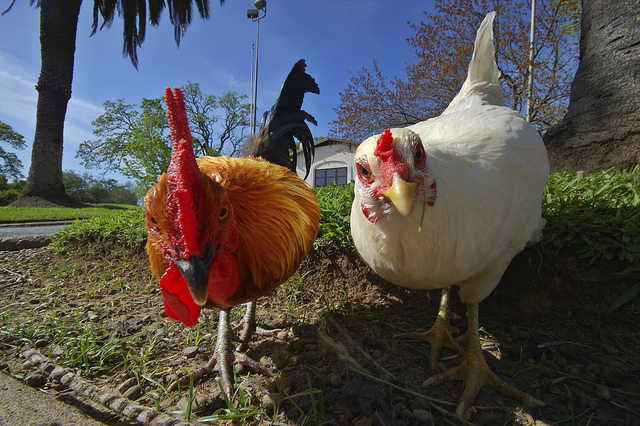



Questions to Ask Before Starting a Backyard Flock in an Urban Area
Backyard chickens are becoming one of today’s hottest pets. These benefits are just for families who live in the country, right? Surprisingly not. Gordon Ballam, PhD, a flock nutritionist for Purina Animal Nutrition, says that backyard chickens can make excellent additions to a family – no matter where you live.Today’s estimates show that more than 1 million US families enjoy the fresh, wholesome eggs and undeniable companionship of backyard chickens.
“We’re seeing an explosion of backyard chickens in both urban and rural areas,” he said.
“We have flock customers on all ends of the spectrum, including families with free-range birds in South Dakota and those with small flocks of chickens in Austin, Los Angeles, New York City and Chicago. With the right management and care, backyard chickens can do well almost anywhere.”

When considering raising backyard chickens, first determine if they are allowed in your area. Many townships, villages and cities have embraced the benefits of backyard flocks; however, chicken keeping is not yet permitted everywhere.
To determine if a backyard flock is accepted in your area, follow these steps:
1. Connect with your local government.
“To be certain chickens are permitted or if possible restrictions appear in your area, contact your local government officials,” Mr Ballam recommended.
Begin the discussion by calling a member of your local planning board, county clerk or animal control representative. Contact information for the correct person can typically be located on your city’s website.
2. Ask the right questions.
Some cities have rules about the size of your flock, coop building or amount of acreage needed per animal.
Mr Ballam recommended asking:
- How many birds are allowed?
- Are both hens and roosters acceptable?
- Are there rules on where the coop can be built?
- What do I need from my neighbours before starting?
- Do I need a permit to raise chickens and/or build a coop?
- Who can I contact if I have to unexpectedly part ways with my chickens?
3. Secure a copy of the local ordinances.
To be certain your new members of your family can stay in your family, Mr Ballam encourages securing a copy of the local ordinances and keeping it on file.
4. If chickens are not allowed, empower change.
If chickens are not zoned for by your local government, change is possible by amending local laws. Depending on your area, you may need to fill out various paperwork and attend a local government meeting.
“In this case, the best bet is to be prepared,” said Mr Ballam. “Join forces with other flock enthusiasts in your area to outline the benefits of raising birds and a plan for raising chickens. Often, showing community support and the benefits are key drivers in adding chickens to a community.”
Many urban communities have a local meet-up or chat groups dedicated to raising backyard chickens. You can find one in your area with a simple online search.
5. Visit with your neighbours.
Once you have the go-ahead to get started, visit your neighbours and share your plans with them.
“It’s always best to share plans in advance and to work together on the project,” Mr Ballam advised. “Describe the benefits, quiet nature and community opportunities of raising chickens. Your neighbours will likely be excited about visiting their new community members.”
6. Design your flock.
Your family should now be ready for one of the most exciting parts of the process: designing the flock.
“There are hundreds of breeds to choose from,” Mr Ballam said. “Determine if you wish to have chickens for eggs, meat or show. Explore the breeds’ personalities, amount of space they need and if they are right for your climate. Then, pick up supplies and start small with a flock of 4 to 6 chicks. Your local Purina retailer is a good resource to help you get started.”
Further Reading
You may also be interested in this article on 'Raising and Preparing Your Backyard Flock', which was featured in November's issue of ThePoultrySite Digital.








